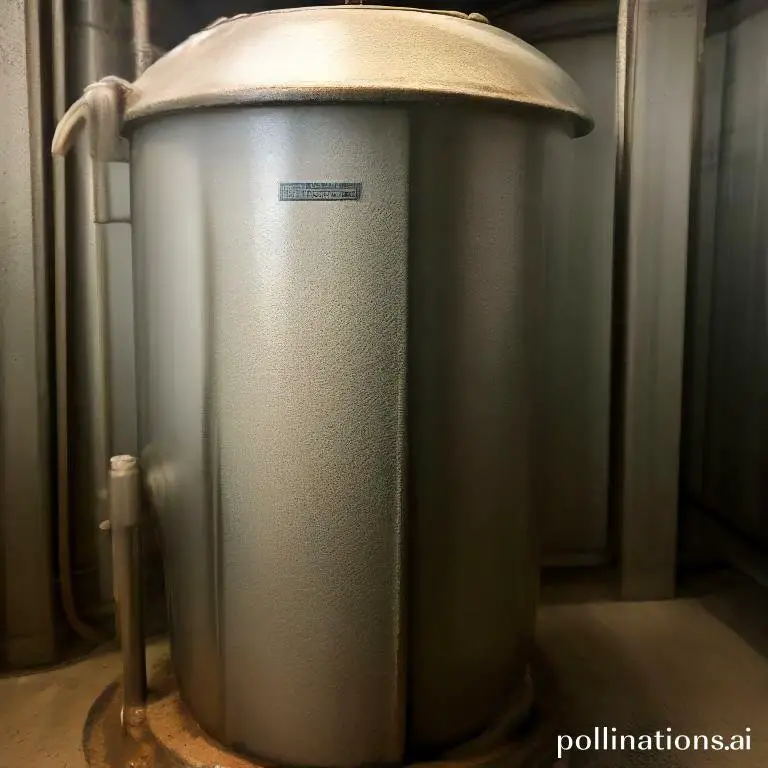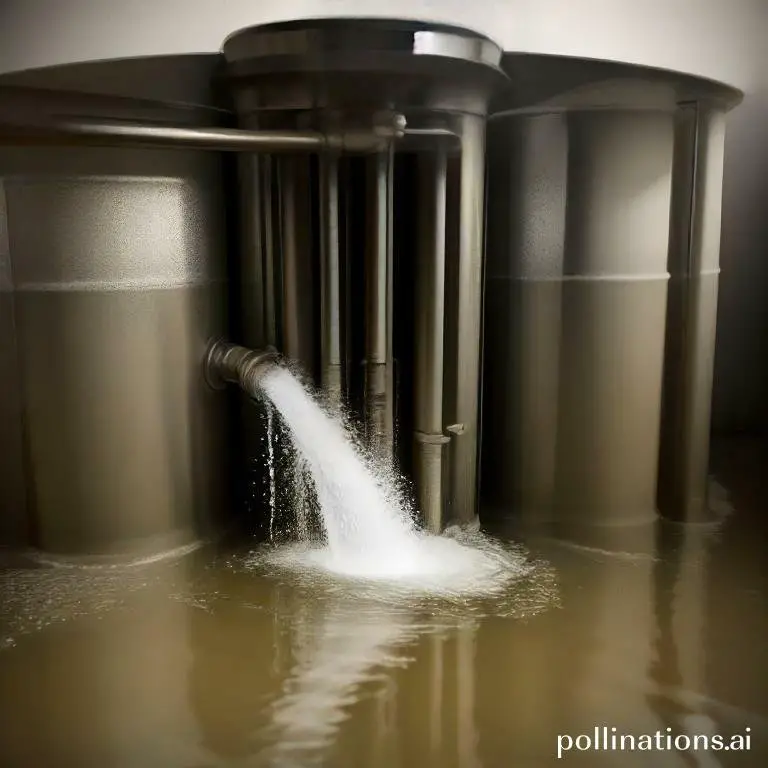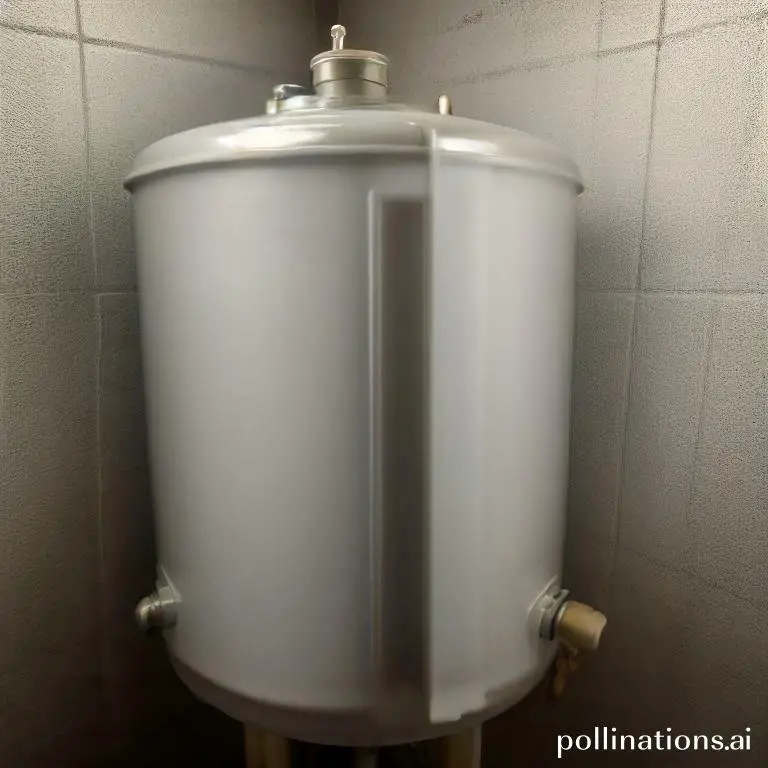
II. Sediment acts as an insulator, trapping heat and causing the tank to overheat, leading to corrosion and eventual failure of the tank.
III. Regular maintenance, such as flushing the tank and removing sediment buildup, can prevent corrosion and extend the lifespan of the water heater.
Sediment buildup in water heater tanks can have a significant impact on corrosion. Over time, minerals and other impurities in the water can settle at the bottom of the tank, forming a layer of sediment.
This sediment can create a barrier between the water and the tank, preventing proper heat transfer and leading to increased corrosion. Regular maintenance, such as flushing the tank to remove sediment, is essential to prolonging the lifespan of your water heater and ensuring optimal performance.
What is Sediment in a Water Heater Tank?
Sediment refers to the accumulation of minerals, debris, and other impurities that settle at the bottom of a water heater tank. It is a common issue that can affect the performance and efficiency of the water heater.
1. Definition and Types of Sediment
Sediment in a water heater tank can be categorized into two main types: mineral sediment and debris sediment.
Mineral sediment: This type of sediment is primarily composed of minerals such as calcium carbonate, magnesium, and iron. These minerals are naturally present in the water supply and tend to settle at the bottom of the tank over time.
Debris sediment: Debris sediment consists of particles like sand, dirt, rust, and other impurities that enter the water heater tank through the water supply. These particles can accumulate and settle at the bottom of the tank, leading to potential issues.
2. How Sediment Accumulates in Water Heater Tanks
Sediment accumulation occurs due to the natural process of water heating and cooling in the tank. When water is heated, the minerals and particles present in the water become less soluble, causing them to settle at the bottom. Over time, this sediment layer becomes thicker and can affect the performance of the water heater.
Factors such as the hardness of the water supply, frequency of use, and age of the water heater can contribute to the rate at which sediment accumulates.
Integral to regularly inspect and flush the water heater tank to remove sediment buildup. This can help prevent issues such as reduced heating efficiency, increased energy consumption, and potential damage to the tank or heating elements.
Example: For instance, if a water heater is not flushed regularly, the mineral sediment can act as an insulating layer, reducing the transfer of heat from the heating elements to the water. This can result in longer heating times and higher energy bills.
| Type of Sediment | Causes | Effects |
|---|---|---|
| Mineral Sediment | Naturally present minerals in the water supply | Reduced heating efficiency, potential damage to the tank and heating elements |
| Debris Sediment | Particles entering the water heater tank through the water supply | Potential damage to the tank and heating elements |
Regular maintenance and flushing of the water heater tank can help prevent sediment buildup and ensure the efficient and reliable operation of the water heater.
Effects of Sediment on Water Heater Tank Corrosion
Sediment buildup in water heater tanks can have detrimental effects on their longevity and performance. Grasping how sediment leads to corrosion and recognizing common signs of corrosion caused by sediment buildup is crucial for maintaining a functional water heater.
1. How Sediment Leads to Corrosion
When water containing minerals and impurities flows into a water heater tank, these particles settle at the bottom over time, forming sediment. This sediment layer acts as an insulator, preventing efficient heat transfer from the burner or heating element to the water. As a result, the temperature of the tank increases, leading to accelerated corrosion processes.
The sediment layer also creates a barrier between the water and the tank lining, promoting the formation of localized corrosion cells. These cells allow for the degradation of the tank material, leading to leaks, rust, and ultimately, the failure of the water heater.
2. Common Signs of Corrosion Caused by Sediment Buildup
Recognizing the signs of corrosion caused by sediment buildup can help homeowners take timely action to prevent further damage. Some common indicators include:
- Rust-colored water: If you notice rusty water coming out of your faucets or showerheads, it is a clear sign of corrosion within the water heater tank.
- Strange noises: Sediment buildup can cause rumbling or popping noises as the water heater heats the water. These noises indicate that the sediment is interfering with the heating process.
- Reduced hot water supply: Sediment accumulation can reduce the space available for hot water storage, leading to decreased hot water supply and longer heating times.
- Frequent repairs: If you find yourself frequently repairing or replacing components of your water heater, sediment buildup may be the underlying cause of the recurring issues.
Regular maintenance, such as flushing the tank to remove sediment, can help prevent corrosion caused by sediment buildup. Consulting a professional plumber is recommended for proper maintenance and to ensure the longevity of your water heater.
Prevention and Maintenance of Sediment Buildup in Water Heater Tanks
Regular Flushing and Drainage of Water Heater Tanks
Sediment buildup in water heater tanks can lead to reduced efficiency and even damage to the tank itself. One effective way to prevent this is through regular flushing and drainage of the tank. Flushing the tank involves draining out the water and any accumulated sediment, ensuring that it remains clean and free from debris.
Regular flushing: Flushing the water heater tank should be done at least once a year to remove any sediment that may have accumulated. This process helps maintain the efficiency of the tank and prolong its lifespan. It also helps to prevent clogs and blockages that can occur due to sediment buildup.
Drainage: After flushing the tank, integral to ensure proper drainage. This involves allowing the tank to completely empty before refilling it with fresh water. Proper drainage helps to remove any remaining sediment and debris, leaving the tank clean and ready for use.
Installation of Sediment Filter Systems
In addition to regular flushing and drainage, another effective method to prevent sediment buildup in water heater tanks is the installation of sediment filter systems. These systems help to capture and remove sediment particles before they reach the tank, ensuring cleaner water and reducing the risk of sediment accumulation.
Sediment filter systems: Installing a sediment filter system involves placing a filter between the water supply and the water heater tank. This filter traps sediment particles, preventing them from entering the tank and causing buildup. Regular maintenance of the filter is necessary to ensure its effectiveness.

How to Flush a Water Heater Tank
Flushing a water heater tank is an essential maintenance task that ensures its optimal performance and prolongs its lifespan. By removing sediment and mineral buildup, you can prevent clogs, improve energy efficiency, and maintain the quality of your hot water. Follow these steps to flush your water heater tank:
1. Steps to Flushing a Water Heater Tank
Step 1: Turn off the power supply to the water heater. For electric heaters, switch off the circuit breaker. For gas heaters, turn off the gas supply.
Step 2: Attach a garden hose to the drain valve located at the bottom of the tank. Place the other end of the hose in a suitable drainage area, such as a floor drain or outside.
Step 3: Open a hot water faucet in your home to allow air into the system and facilitate the draining process.
Step 4: Open the drain valve on the water heater to start draining the tank. Be cautious as the water may be hot. Ensure the water flows freely through the hose.
Step 5: Once the tank is empty, close the drain valve and remove the hose. Turn off the hot water faucet you opened earlier.
Step 6: Turn on the water supply to the heater and allow it to fill the tank. Check for any leaks around the connections.
Step 7: Once the tank is full, turn on the power supply or relight the pilot light, depending on your heater type.
2. Frequency of Flushing a Water Heater Tank
Flushing your water heater tank should be done at least once a year to maintain its efficiency. Albeit, in areas with hard water or high mineral content, more frequent flushing may be necessary. Regular flushing can help prevent sediment buildup and extend the lifespan of your water heater.
| Benefits of Flushing a Water Heater Tank | Frequency |
|---|---|
| Prevents sediment buildup | At least once a year |
| Improves energy efficiency | In areas with hard water: every 6 months |
| Prolongs water heater lifespan | In areas with very hard water: every 3 months |

Benefits of Preventing Sediment Buildup in Water Heater Tanks
Sediment buildup in water heater tanks can significantly impact their performance and lifespan. By preventing sediment buildup, you can enjoy various benefits that contribute to the longevity and efficiency of your water heater.
1. Extended Lifespan of Water Heater Tanks
Regular maintenance and prevention of sediment buildup can extend the lifespan of your water heater tanks. Sediment accumulation can lead to corrosion and damage to the tank, which can result in leaks or even total failure. By keeping the tank free from sediment, you can ensure that your water heater lasts for many years, saving you the cost of frequent replacements.
2. Improved Energy Efficiency and Cost Savings
Sediment buildup in water heater tanks can act as an insulator, reducing the efficiency of the heating element. This means that the water heater needs to work harder and use more energy to heat the water to the desired temperature. By preventing sediment buildup, you can improve the energy efficiency of your water heater and reduce your energy bills. Additionally, a more efficient water heater consumes less energy, leading to a smaller carbon footprint.
To illustrate the energy savings, consider the following data:
| Without Sediment Prevention | With Sediment Prevention | |
|---|---|---|
| Energy Consumption | High | Low |
| Cost of Energy | Higher | Lower |
Bottom Line
In regard to water heater tank corrosion, sediment buildup can have a significant impact. Sediment can act as a barrier between the water and the tank, causing the metal to corrode more quickly. Regular maintenance, such as flushing the tank and removing sediment, can help prevent corrosion and extend the life of your water heater. Additionally, using a water softener can reduce the amount of sediment that accumulates in the tank. If you notice signs of corrosion, such as leaks or rust-colored water, it’s important to address the issue promptly to avoid further damage. By taking steps to prevent sediment buildup and corrosion, you can ensure that your water heater continues to provide reliable hot water for years to come.
Read More:
1. Sediment Removal And Water Heater Anode Replacement
2. Sediment Impact On Water Heater Pipe Clogging










